Imagine a scenario where surviving in extreme conditions, like an avalanche, plane crash, or capsized raft is your only option until rescue comes. You have minimal tools, and you do not know exactly when help will arrive. Disaster strikes when we least expect it, so everyone should know basic survival tips and tricks. Whether you are a recreational hiker or die-hard survivalist, knowing the essential tools and how to use them to your advantage will not only save your life, it can turn a time of crisis into a time of triumph.
Remember, in a survival situation, it is no longer just about getting through the night. You might have others relying on you. So be smart, be prepared, and learn these 27 survival tips and tricks.
1. Learn How to Use Nature as Medication
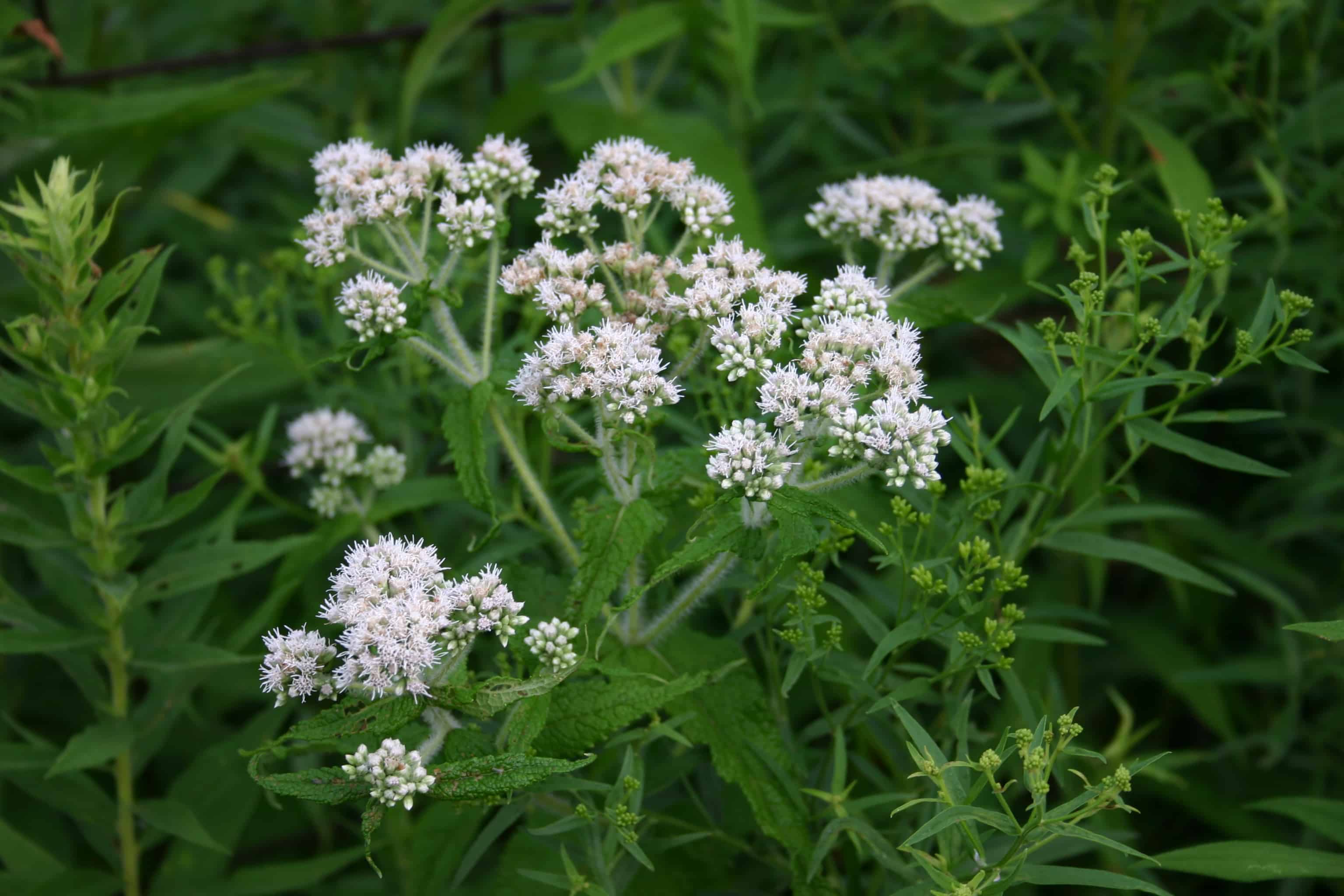
Oak back and acorns are rich in butyric acid, which is an antiseptic and fights off diarrhea. Brew acorns in hot water to make tea if you are feeling ill. Moreover, the tea can treat ulcers. Other natural medicines include elderberry, ginger, boneset, blackberry leaves, rose hips, dandelions, and dock leaves. If you are in pain, chew willow bark (unless you are allergic to aspirin). Plantain leaves can be used to bandage wounds, as well.
If you have charcoal, that can be added to water or chewed for diarrhea relief.
Other natural antiseptics include:
- Garlic. Boil it or rub the bulb directly on a wound. The natural oils can rinse an area of infection and bacteria.
- Bee honey. Dissolved in water or slathered on the open wound—both ways help.
- Sphagnum moss. Found in boggy areas around the world, this moss is a natural source of iodine. Use it as a gauze-like dressing over open wound.
2. Treating Your Own Wounds
The chances of getting injured in the wild is one of the greatest reasons for utilizing these 27 tips. You are going to have to learn basic first aid. For that reason, always try to carry in your hiking backpack a small kit. However, in any situation, always start with the following steps:
Remove or cut clothing away from the wound
- Always look for an exit wound if struck or punctured with a sharp object
- Clean the skin surrounding the wound with purified water, never dirty. If fresh water is not available, urine works.
- As long as wound can drain, it is not life-threatening. Still, the wound has to be covered with clean dressing, such as sealed gauze. If you do not have anything but duct tape, cut that into strips and make “butterfly” or “dumbbell” shaped closures.
To treat an infected wound:
- Warm, damp compresses of distilled water help drain the infection. Compress for about 30 minutes, about 3-4 times a day.
- Drain the wound by probing and poking a hole into the fluid-filled parts with a sterile needle or knife tip.
- After letting it drain for a bit, bandage the wound.
- Stay hydrated.
Of course, having a properly stocked first aid kit makes treating injuries easier. But if you do not have topical antiseptics and antibiotic salves, consider using the natural remedies mentioned in Tip No. 1.

3. Know How to Find the North Star
The reason why it is important to know how to find Polaris, the North Star, is because of its position above Earth’s rotational axis. When you find the North Star correctly, you can follow it North or use its placement in the sky to guide you towards civilization. To do so, you first need to find the Big Dipper, known as Ursa Major. It looks like a big spoon and is composed of several stars. The North Star is the first star in the spoon’s bowl. If you located the Little Dipper (Ursa Minor), then the North Star is at the end of the handle. Check out other methods for finding Polaris on WikiHow.
4. Improve Taste of Water
Some survivalists swear by mineral, Chlor-Floc, Chloride Dioxide, and iodine tablets for their water. Those can be bought in many outdoor or sporting stores. But if you are lost without tablets, build a multiple stage filter with cleaned sand, charcoal and sphagnum moss. Gradually filter previously distilled or boiled water through. Once you filtered it, the flavor should be slightly enhanced. Also, consider adding some edibles to the water, like wild cucumber, fruits, vegetables, and tea leaves.
5. The Many Uses of Aluminum Foil
While you might have this for wrapping up food, keep several sheets with you. Aluminum foil can be used to start fires when the ground is damp. A single sheet (or even a gum wrapper) can be used with a battery to make a fire, or you can use foil with tinder and a char cloth. Moreover, aluminum foil can be used as a bowl for collecting rain water, as a reflector to signal planes passing over head, molded into a fishing lure, or for heat retention around a fire or in an improvised shelter.
6. Learn to Protect yourself Against Predators

If there comes a time when you are being hunted by a predator, albeit a bear, mountain lion, or wild dogs, you need to know how to handle each situation. All animals attack for different reasons.
Bears:
- Never play with the cubs, as the mother bear is nearby and will be furious.
- Play dead if a bear comes close.
- Never leave out food. The scents will attract them.
- Carry bear or pepper spray.
Big Cats:
- Carry a noisemaker (such as a whistle). Big cats do not like loud sounds.
- Display aggressive behaviour, as cats will usually not attack what fights back.
- Find rocks to throw or use pepper spray.
- If a big cat attacks, protect your throat from their claws. They will focus on this area.
Wolves and Dogs:
- Avoid eye contact with dogs and wolves, as this is a sign of aggression and dominance.
- Slump your head down in a submissive gesture.
- A pack that might be hunting you is hard to fight off, especially if you are alone. For this reason, get to higher ground, where wolves cannot climb, and wait for them to leave.
- Also, carry pepper spray or a noisemaker or both to startle them.
Poisonous Snakes
- Know before you go what kind of poisonous snakes are in the area.
- Always wear protective clothing, like hiking boots, long pants, gloves, and long sleeves.
- Learn the cues of a snake about to strike. They usually coil up before attempting to attack.
7. Don’t Neglect Personal Hygiene
When trapped out in the wilderness, keeping clean might be the least of your worries. However, it is not something you should ignore. For example, if you catch a wild rabbit, which is probably crawling with parasites, and do not wash your hands prior to skinning it, cooking it, and eating it, you could get those parasites. If you defecate then handle utensils; carry wood than scratch an open wound; or do anything that could transmit dangerous foreign bodies, you could greatly reduce your risk of survival.
Carry hand sanitizer. If you do not have hand sanitizer, learn which plants work as natural astringents. Common plants is European soapwort, Ragged Robin, campions, bracken, Horse Chestnut, soap lily, and yucca (PFAF.org). If your mouth needs some care, willow bush sap can be used as a DIY toothpaste.
8. Why Having 2 Compasses is Better Than 1
Although most compasses are resilient and constructed to last in harsh conditions, having more than 1 is always smart. Some compasses might not work in the region where you are, could get damaged, or read inaccurately. Consider getting two compasses that have adjustable declination, luminescent readings, a translucent baseplate, a magnifying or sight glass (or both), and a readable bezel. For instance, you can use one compass to find your bearings while using the second as a reflector for planes.
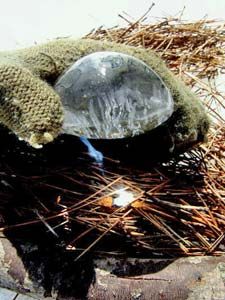
9. Always Have Multiple Ways to Make a Fire
Because the more ways you know, the better your chances of survival. Here are some of the best for any scenario:.
- Fungus for Flames. Two types of fungus–coal fungus and horse hoof fungus–have a flammable composition. Break these in half to reveal their cores. Fungi are great because they easily catch fire then smolder for hours rather than flaring up and fading away rapidly. These species are usually found around dead trees, meaning you get dry material to burn too.
- Ice Fire. Sounds a little counterintuitive, but yes, you can make fire from ice. You will need a piece of ice that can be shaved down and rounded out, either by twisting it against the open end of a pipe, scraping or carving it with a pocket knife. However, the tube with make the ice a sphere, which is the desired shape, because all irregularities are polished away. Hold the ice sphere at an angle in the sun like a magnifying glass over coals or tinder. More details available at Wildwood Survival.
- Dakota Fire Hole. There might come a time when you need to build a fire but do not want to be seen–especially if behind enemy lines or on a terribly windy day. That is where the Dakota Fire Hole comes in. Simply put, the Dakota Fire Hole is two small pits dug side-by-side. A small tunnel connects them. Start a fire in one of the pits, and let the other hole simply feed air to the bottom of the fire.
- AA-Battery Hack. All you need is a foil-backed gum wrapper (or aluminum foil) and a battery. First, cut the gum wrappers into hourglass shapes. Hold the ends of the hourglass foil against the both ends of the battery. After a few seconds, it should start to smoke. Flames will emerge at the foil arc. Place into your fire pit to get cooking.
10. Use White Birch Bark as Splints
Birch bark is amazingly sturdy. If you ever need to splint an arm or leg in the wild, it is the best resource to use. What you will need is a birch tree as round as the afflicted arm or leg. Slice of a sheath of bark long enough to cover the injury or hurt region. Line the inside of the splint with dry sphagnum moss or something similar the bind the splint with paracord, twine, or duct tape.
11. Learn to Treat Blisters with Duct Tape
Blisters can be downright painful and crippling when you have enough of them. Use duct tape to cover a blister (that has been drained) or the start of one. The duct tape will protect the area from infection and also reduce friction. You can use a small strip or cover the entire foot if need be. While it may not be entirely comfortable, at least you will not be in pain. Other uses for duct tape include: butterfly bandage strips, a DIY sling, arrow fletching, and sheaths for blades.
12. Spit Fishing
If you are stuck without any gear but the shirt you are wearing, you still are not entirely out of luck. Find a freshwater stream, hopefully someplace with minnows or other small fish. Wade out into the water. Pull your shirt away from you while under the water’s surface to use as a net. Then spit. Small fish are attracted to it because it looks like food. As they gather, lift yourself out of the water. Keep your shirt stretched out in front of you to catch some fish.
13. Always Purify Water
There are many ways to do this out in the wild, fortunately. One of them is to boil water, even rain water and snow. This gets rid of impurities by distilling it. Never drink rain, eat snow, or drink directly from river. You never know what bacteria is it there.
When trapped without nearby sources of water, get distilled and purified water using a solar still. The solar still has long been utilized for desert survival, but you should know how to make it in any situation. Dig a hole in direct sunlight, put a cup or aluminum bowl in the center. Cover the hole with a plastic sheet or tarp, and weigh down the corners, making sure no air escapes. Lastly, put a pebble at the center, right over the collection bowl. As the sun heats the pit, moisture will gather. Distilled water will drip into the collection cup over time.
14. Don’t get Sweaty in Cold Temperatures
When you wear multiple layers in cold temperatures, you actually increase the risk of sweating. Avoid that by wearing a single, insulated layer (such as thermals and flannel). When resting, think about using the following:
- The surroundings: Whenever you are stuck outside in cold weather and cannot start a fire right away, one of the basic steps to getting warm is to stuff dried grass, newspaper, and leaves underneath your clothing. Crumpled newspaper has long been used by the homeless to keep them insulated in the winter. Just remember that if you sweat from too many layers, you will actually be colder than you would be wearing less.
- Bubble wrap: While carrying around a wad of bubble wrap might not sound very appealing, a Norwegian study in 2008 found that a single layer of bubble wrap provided 69% of the insulation of three cotton blankets. Being that it is made of plastic, bubble wrap is more reliable for warmth in damp or dreary conditions than fabric. That is without popping the bubbles, by the way.
15. Use Mud to Protect from Mosquitoes
In the past, Native Americans used mud and clay to protect their exposed skin from clouds of mosquitoes in the summertime. A thick layer of mud can mask the aroma that draws thirsty mosquitoes to you in first place, as well as shields you from emitting body heat (like Arnold Schwarzenegger in Predator).
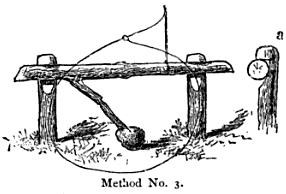
16. Snares for Small Game
To create a snare, you will need wire, paracord, twine or something similar. Make a circle then tie a simple overhand knot. Do not make the knot too tight, because you want the animal to tighten the wire onto itself. Always place the anchor higher up (like to a tree), especially if snaring a hole.
For a more advanced option, try the Figure 4 Deadfall. Though slightly challenging to build, the Figure 4 Deadfall is a decent way for trapping and killing small animals. Practice on building this trap is recommended, because your measurements have to be precise and the balance must be adequate, or else it will be ineffective. Check out how to make it here: https://www.youtube.com/watch?v=0XlirThhrME
17. Learn How to Make Char-cloth
Always have a piece of cloth (or several rolled up sections) stored inside a covered metal container (like an Altoids mint box, for example). Burn the container with the cloth inside for a few minutes, making sure the box does not crumble. When the box cools, open it up carefully. The char cloth should still be intact but completely blackened. What is wonderful about char cloth is that it ignites easily with just a tiny spark.
18. Food from Nature
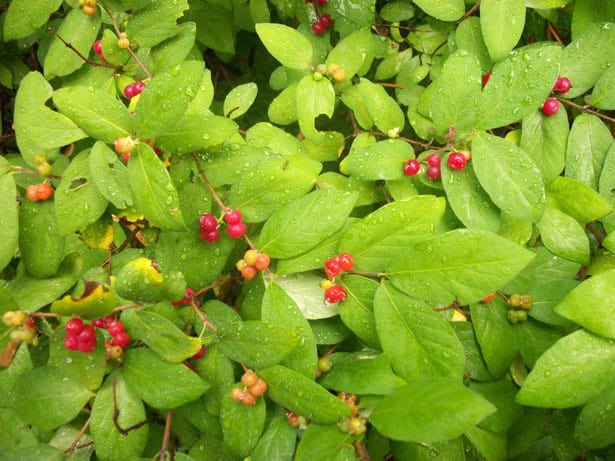
First, if you catch a fish, consider boiling it. This preserves the essential fats and nutrients inside the skin. Aside from what you know to be edible in the wild, know some alternatives too. In the desert, seek out cactus or agave for water. Day lily and water lily roots are edible, as well as cattail shoots and watercress. Acorns, acacia seeds, walnuts, and hickory tree nuts can be boiled then eaten. Also onion grass can be consumed after rinsing.
19. Never Leave Fire Unattended
There are multiple reasons why this is a bad idea, especially from a survivalist standpoint. But the main reason is this: You never know if the fire is going to get out of control. A turn of the wind or unpredictable weather can cause the flames to rise dangerously high. What began as a small fire pit is now a ranging wildfire. Always completely extinguish any fire when not in use.
20. Learn How to Tell North Without a Compass
There are several ways to learn how to tell North should something happen to your essential compass. One way is the Shadow-Tip Method. Be sure that you are in an area where the sun shines unhindered. Place a stick upright so you can see its shadow. Mark the tip of that shadow with a small object, like a stone. Next, wait 10-15 minutes. The shadow should move from west to east. Mark the new position of the shadow with another stone. Draw a line between the two points. This is an east-west line. Stand with west on your left, east on your right, so that you are facing true north.
More ways to tell North without a compass can be read at WikiHow: Find True North Without a Compass.
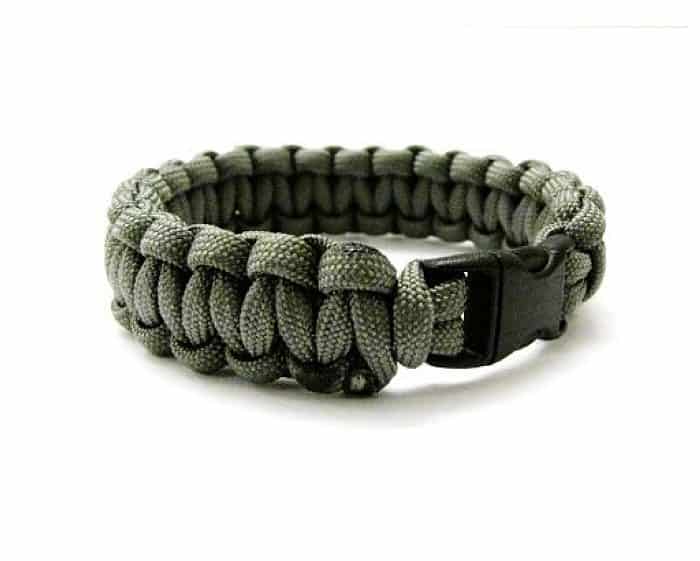
21. Always Wear a Paracord Survival Bracelet
Sure, you can wear it as an accessory to keep up with the trends. Or you can use it to save your life. There are many types of paracord survival bracelets out there, but most of them provide the basic function of unwinding to be use as cord, rope, tinder, hooks, and netting. Consider investing in a decent paracord survival bracelet, or make your own, because you never know when you are going to need rope out in the wilderness.
22. Always use Clean Water to Treat Wounds
According to AdvancedTissue.com, open wounds need to be kept moist and covered. Hydrated wounds heal faster than those that are exposed to air. Pure, distilled or filtered water helps clean debris from the wound and also jumpstarts the proliferation phase. That means new skin cells can grow faster.
23. Sleep on an Elevated Surface if Possible
Hypothermia is the #1 killer of people stuck outdoors. The simplest way to keep warm is the stay off the ground. When you sleep on the ground, your body heat sinks into the earth, chilling you fast. Be sure to carry with you some kind of barrier or make a duct tape hammock. Logs, boughs, and shrubbery can also elevate you as well.
24. Learn How to Collect Rain Water
Keep with you a tarp (especially if making a wedge tarp shelter), which can be used to catch rainwater and funnel it into a plastic bottle or aluminum foil bowl. Setting up the tarp is simple: tie two adjacent corners to trees or poles. Fix the bottom corners so there is some sag in the middle of the tarp. Place your container at the bottom then wait.
Always boil or purify your rainwater with charcoal. It will be contaminated if not.
25. How to Get Water from Trees

Consider this an upgraded solar still for the forest rather than the desert. Take a plastic bag or sheet and wrap it around a bough covered in leaves. This works best if that bough is directly in the sun. As the sun heats the leaves, they will release water, and that will get trapped within the plastic bag.
26. Condoms and Tampons
Don’t laugh. These can be incredibly useful.
- Condoms can save you from more than one reason. For example, two or three condoms can be filled with enough water to last a single person for a week (when rationed appropriately). Condoms can also preserve charcoal for purifying water, dry tinder, and food. Latex condoms burn easily; and since they are rather elastic, condoms can be also be used as rope.
- Because of the cylindrical shape and absorption properties, tampons are great for treating deep wounds when there is no medical center in sight. Tampons are typically portable, small, lightweight, and relatively inexpensive compared to gauze and the like. Also, tampons can be fashioned into a fishing lure, since the plastic applicator is buoyant.
27. Most Importantly: Don’t Panic
That is the number one thing to remember. If you begin to lose your composure, the chances of attracting predators, doing something silly, or waffling until the sun goes down are all possible. Do not panic. Think calmly about the situation. Assess your surroundings, try to figure out what is available to you, and take inventory of whatever belongings you may have with you. When you learn what tools there are, then begin trying to find sources of water, shelter, and work to make your situation better.
What do you think? Will these 27 survival tips and tricks come in handy, and how can you see yourself improving on them? Survival, after all, is all about increasing the likelihood of getting out of a poor circumstance alive by improving everything you can. Using this tips, you not only know how to get your directional bearings, you can treat wounds, find and make food, fashion up shelter, stay warm, and protect yourself from threats.

